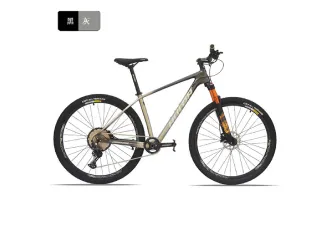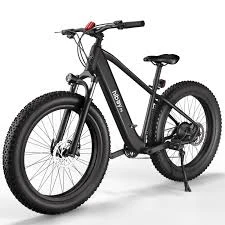
- Afrikaans
- Albanian
- Amharic
- Arabic
- Armenian
- Azerbaijani
- Basque
- Belarusian
- Bengali
- Bosnian
- Bulgarian
- Catalan
- Cebuano
- Corsican
- Croatian
- Czech
- Danish
- Dutch
- English
- Esperanto
- Estonian
- Finnish
- French
- Frisian
- Galician
- Georgian
- German
- Greek
- Gujarati
- Haitian Creole
- hausa
- hawaiian
- Hebrew
- Hindi
- Miao
- Hungarian
- Icelandic
- igbo
- Indonesian
- irish
- Italian
- Japanese
- Javanese
- Kannada
- kazakh
- Khmer
- Rwandese
- Korean
- Kurdish
- Kyrgyz
- Lao
- Latin
- Latvian
- Lithuanian
- Luxembourgish
- Macedonian
- Malgashi
- Malay
- Malayalam
- Maltese
- Maori
- Marathi
- Mongolian
- Myanmar
- Nepali
- Norwegian
- Norwegian
- Occitan
- Pashto
- Persian
- Polish
- Portuguese
- Punjabi
- Romanian
- Russian
- Samoan
- Scottish Gaelic
- Serbian
- Sesotho
- Shona
- Sindhi
- Sinhala
- Slovak
- Slovenian
- Somali
- Spanish
- Sundanese
- Swahili
- Swedish
- Tagalog
- Tajik
- Tamil
- Tatar
- Telugu
- Thai
- Turkish
- Turkmen
- Ukrainian
- Urdu
- Uighur
- Uzbek
- Vietnamese
- Welsh
- Bantu
- Yiddish
- Yoruba
- Zulu
Jan . 14, 2025 11:08 Back to list
New National Standard Electric Bicycle 48V20AH Men′s and Women′s Two Wheel Electric Bicycles Hot Sale
Navigating the price spectrum of electric e-bikes requires a well-rounded understanding of the factors that influence cost, quality, and performance. As someone who has delved deep into the world of e-bikes, I’m here to provide insights that will help demystify the often confusing pricing of these modern marvels of transportation.
While cost is a significant consideration, it’s also vital to examine the value proposition each e-bike offers. This involves looking at after-sales support, warranty provided by the manufacturer, and the availability of replacement parts or upgrades. Brands known for their customer service and robust support networks often justify higher price tags, as they offer peace of mind and reliability over time. Moreover, the growing trend of customizable e-bike options is another factor influencing price. Many manufacturers now allow consumers to tailor their e-bikes according to specific needs and preferences, from color choices to performance enhancements. This flexibility is incredibly appealing to users who seek a personalized experience but will often come at an additional cost. Lastly, let’s not overlook the environmental benefits that accompany the purchase of an e-bike. The initial investment, though sometimes substantial, supports eco-friendly transportation, reducing one's carbon footprint while promoting sustainable living. Government incentives and rebates available in certain regions can also alleviate financial burdens, making high-quality e-bikes more accessible to a larger audience. Armed with this knowledge, potential buyers can approach the e-bike market with confidence, equipped to choose a model that best suits their lifestyle, performance requirements, and budget.


While cost is a significant consideration, it’s also vital to examine the value proposition each e-bike offers. This involves looking at after-sales support, warranty provided by the manufacturer, and the availability of replacement parts or upgrades. Brands known for their customer service and robust support networks often justify higher price tags, as they offer peace of mind and reliability over time. Moreover, the growing trend of customizable e-bike options is another factor influencing price. Many manufacturers now allow consumers to tailor their e-bikes according to specific needs and preferences, from color choices to performance enhancements. This flexibility is incredibly appealing to users who seek a personalized experience but will often come at an additional cost. Lastly, let’s not overlook the environmental benefits that accompany the purchase of an e-bike. The initial investment, though sometimes substantial, supports eco-friendly transportation, reducing one's carbon footprint while promoting sustainable living. Government incentives and rebates available in certain regions can also alleviate financial burdens, making high-quality e-bikes more accessible to a larger audience. Armed with this knowledge, potential buyers can approach the e-bike market with confidence, equipped to choose a model that best suits their lifestyle, performance requirements, and budget.
Latest news
-
The Ultimate Kids' Four-Wheeler Experience
NewsJul.09,2025
-
The Ultimate Guide to Mountain Bikes: Gear Up for Your Ride
NewsJul.09,2025
-
The New Age of Cycling: Electric Bikes for Every Rider
NewsJul.09,2025
-
The Best Kids Bicycles: Ride in Style and Safety
NewsJul.09,2025
-
The Best 3-Wheel Scooters for Kids: Fun, Safety, and Adventure
NewsJul.09,2025
-
Revolutionize Your Ride: Affordable Electric Bikes
NewsJul.09,2025
-
Finding the Perfect Mountain Bike for Every Rider
NewsJul.09,2025



